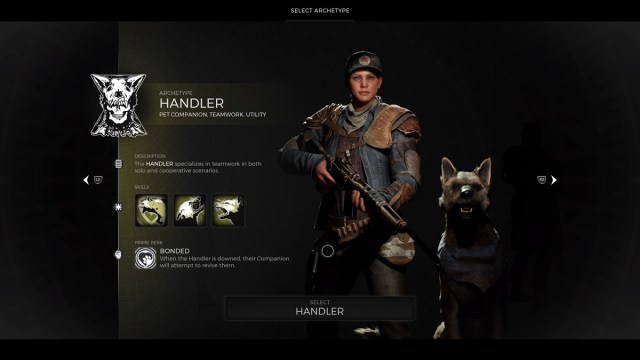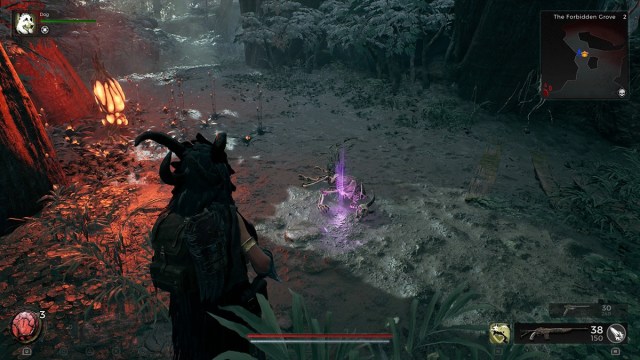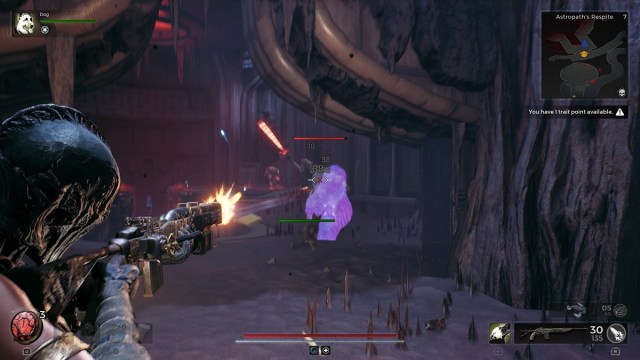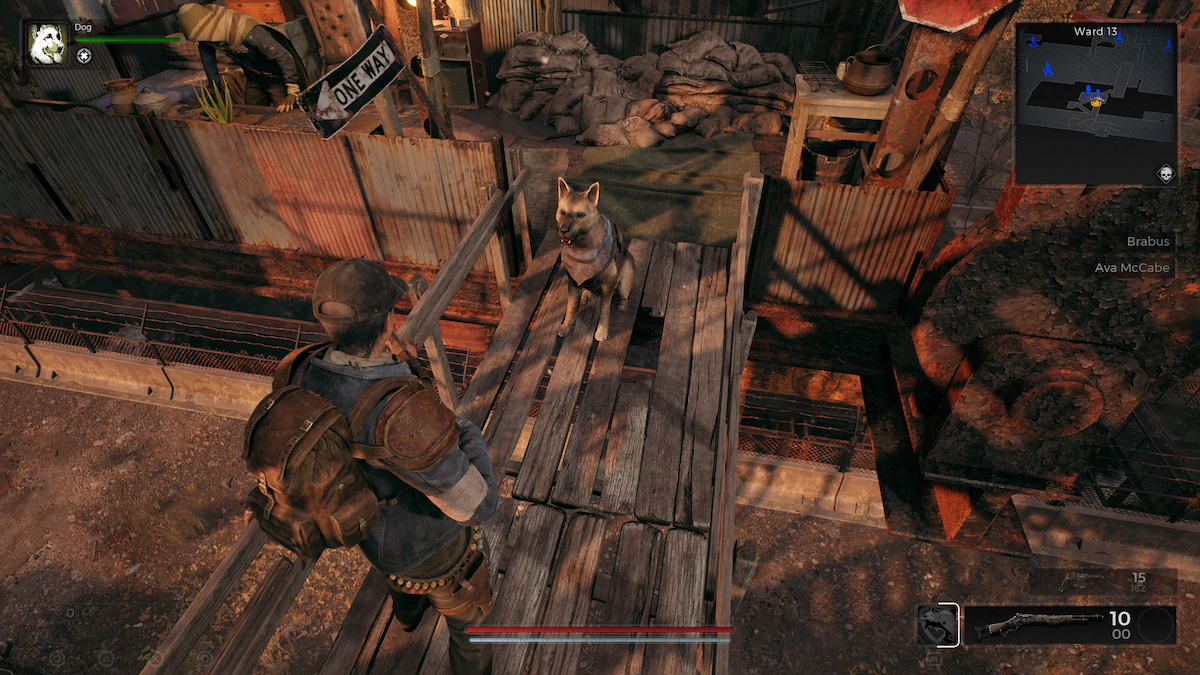Remnant 2 on PS5
I was a massive fan of Remnant: From the Ashes because too many third-person shooters attempt to borrow Soulsborne ideas with poor execution. The first Remnant offered something unique in a campaign full of planets you could reroll at any time, wiping the slate clean and starting over. Remnant 2 carries the ideas of the first game forward in meaningful evolutions.
Remnant 2 starts with your created character walking through a post-apocalyptic Earth with your best friend Cass. You are on the search for Ward 13 but aren’t sure the concept isn’t just an urban legend. After a trek too far into Root territory, you are both set upon and overwhelmed by enemies.
Fortunately, you are both saved by Ward 13 citizens who lead you back and show you around, finally offering the salvation you hadn’t had before. While the cold open at the beginning meant the game was already getting things going, I wouldn’t have minded a bit of context to see where Cass and my character were coming from. Dialogue from Cass reveals that where they were wasn’t safe, but it would’ve been nice to have more beyond that.
After meeting with the old man running the place and introducing yourself to familiar faces from the first game, you get to choose your Archetype. These are all vastly different depending on what playstyle you are looking for. There’s the damage-dealing Hunter, the healing Medic, Handler with a dog (that you can pet whenever you want) companion, and the melee/close-range focused Challenger. I went with the Handler without a second thought and never looked back.

The dog companion is perfect for solo players because it does several things that a co-op partner would do. Without upgrading the Archetype, the dog will draw enemy focus and revive players if they get knocked down (with a two-minute cooldown, so you can’t cheese it). Advancing the class even unlocks an AoE (area of effect) healing howl that kept me on my feet when I needed a burst of health.
Your Archetype comes with a specific trait that, when leveled enough, can be kept even if you swap Archetypes. Traits are how you upgrade base stats and certain character facets. This can be health, stamina, or even augmenting your movement speed. While some traits can come with leveling up, the rest can be found through similar means of rings and equipment.
Every character can equip four rings and one amulet that give all sorts of crazy perks. My favorite ring is one that gives me health regeneration after I have sprinted for 1.5 seconds. While this is rather limiting around enemies, when you’re not in combat, stamina doesn’t drain. This means that even if I was at low health at the end of the last fight, I could run in circles for a minute and get it all back without any health item usage.
After Archetype selection and getting situated with your loadout, the old man takes you into a nearby bunker. It wasn’t instant recognition, but I quickly realized I was inside the bunker that served as the hub in the previous game.
The old man takes you to the same World Stone that was used in Remnant: From the Ashes to visit nearby planets. He touches it and quickly disappears, and the same thing happens to one of the citizens who followed you both into the bunker. Gathering up all of your resolve, your character similarly touches the World Stone and is teleported to a different, random planet.
I am unsure how many starting locations there are, but I can guarantee two. In two separate attempts at the campaign, I was whisked away to the forest world of Yaesha and the sandy, robot-infested N’Erud. Both of these feature completely different environments, enemies, and secrets to discover.
The randomization of Remnant 2 is its biggest strength, and it does it on a much larger scale than the first game. This time it feels like everything is randomized, and the two times I went through Yaesha felt like I was playing just about two different games.
The best part of Remnant is simply the exploration. There’s no better feeling than turning a corner and seeing a purple beam on the ground that is about to give you a new ring/amulet. While there is a chance for it to be a piece of armor or a weapon, those are almost entirely saved for completing secret objectives.

For instance, I killed a boss, got the boss’s ring, and found an NPC after the fight who eventually noticed the ring and was happy to let me keep it. However, the game offered me the dialogue choice to give the NPC the ring, and I was rewarded with a new Handgun. The beauty of this is that you could essentially wipe this area clean and start fresh, and if you find the ring again, you can keep it.
There’s no guarantee you’d get this instance again, considering the game’s random nature, but it would likely be replaced by something just as neat to experience. There are two ways to get a fresh run on a planet: completely resetting your campaign or taking on individual planets in Adventure Mode once you have completed them. The former is a more drastic measure, as all your campaign progress is gone. Adventure Mode is safer, as you are getting to experience any planet as many times as you wish in an isolated instance.
The game nicely makes a clear delineation between a story-objective dungeon and a random one. Not every dungeon ends in a boss fight, as some culminate in a short event like protecting someone or reaching the bottom of a tower’s spiraling path while an electric wall of death follows you down. You never know what you’ll get, so it is always worth taking at least one additional playthrough of every planet to experience things you will have missed the first time. This level of replayability cannot be overstated, and it kept me engaged during my whole playthrough.
Combat is standard for a third-person shooter, but the guns provide plenty the excitement to keep it thrilling. Besides the two weapons, you can always have one melee weapon equipped. However, attacking with melee is bound to the right trigger, meaning you can’t hipfire with guns. If you want to shoot, you have to hold the left trigger to aim. Melee also never felt good enough to use on any regular basis. This is the same issue as the first game, but I had been slightly hoping it would be changed.
Weapons can be outfitted with mods that do things like imbue the next magazine’s bullets with fire or let you spawn friendly enemies to help you. Weapons made from boss items usually have a unique mod that can’t be replaced and typically behaves similarly to the boss you killed for it.

Ammo is a precious resource, and I ended up using my secondary weapon in many fights, praying one enemy would finally drop ammo for my primary. This is especially tough in boss fights where there might not be additional enemies to fight in order to drop extra ammo. This can be offset by buying Ammo Box consumables that fill the stocks of both equipped weapons, but the expense adds up quickly.
The best time for your weapons to shine is in boss fights, be it random field encounters or actual grey gate, scripted fights. Many times I would be sure I had a great weapon based on how easily I was dropping the weakest enemies, but it didn’t do enough to a boss. This led to plenty of experimentation on my whole loadout to fit a fight.
While Remnant 2 borrows a few Soulsborne ideas, it isn’t beholden to them. While you’ll likely die plenty, there’s no penalty for doing so, which removes much of the frustration when you keep getting worked over by a boss.
If you’re a fan of the first game or want a new third-person shooter with tons of replayability thanks to randomized levels and dungeons, this game is the right choice for you. Remnant 2 might not technically be a looter shooter, but plenty of loot can be found. You have to be willing to go down the spooky alleyway or head into the mysterious hole in the ground and trust you’ll find something cool.
Pros
Cons
Still no hipfire option/mechanic.
